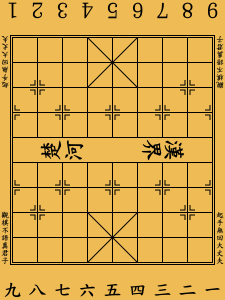|
Double check
From this position, 1.Bxe5++ is a winning double check.
In chess and other related games, a double check is a check delivered by two pieces simultaneously.[1][2] In chess notation, it is almost always represented the same way as a single check ("+"), but is sometimes symbolized by "++". (The symbol "++", however, is also sometimes used to denote checkmate.[3]) This article uses "++" for double check and "#" for checkmate. Chess Gundersen vs. Faul, 1928
After 14...g7–g5, White mates with a double check by capturing the pawn en passant.
The most common form of double check involves one piece moving to deliver check and revealing a discovered check at the same time from a piece it had been blocking. The only possible reply to a double check is a king move, as it is impossible to block or capture both checking pieces at once. In exceptional circumstances, it is possible for the moved piece in a double check to not give check. The only way for this to happen in orthodox chess is by way of an en passant capture. In the position shown from Gundersen–Faul, 1928, Black has just played 14...g7–g5. White replies 15.hxg6 e.p.#. The result is a double check even though the white pawn does not give check: one check is given by the rook, discovered by the capturing pawn's move; the other by the bishop, revealed by the captured pawn's removal. Such a double check is extremely rare in practical play, but it is sometimes found in chess problems. Game examplesA double check is a part of the smothered mate pattern known as Philidor's legacy. Réti vs. Tartakower, 1910
Position after 8...Nxe4??
Aron Nimzowitsch wrote, "Even the laziest king flees wildly in the face of a double check."[4] Because the only possible response to a double check is a king move, the double check is often an important tactical motif.[1] A famous example is Réti–Tartakower, Vienna 1910, which arose after:
Réti sacrifices a queen in order to set up a double check, as well as an unstoppable checkmate in two moves.
White mates after 10...Ke8 11.Rd8# or 10...Kc7 11.Bd8#.[5] Anderssen vs. Dufresne, 1852
Position after 19...Qxf3?
A double check was also seen in the celebrated Evergreen Game, Anderssen–Dufresne, 1852.[2] Anderssen won with:
A queen sacrifice to set up a deadly double check.
Or 22...Kc6 23.Bd7#.
Variants
In chess with variant rules or fairy pieces, other ways of delivering a double check may be possible. The moves of ordinary chess pieces only permit a maximum of two pieces giving check at once, but in some variants, triple checks and higher may be possible. For example, in the winning position shown to the left, after Black plays 1...d5 to remove the check from the bishop on c4, White plays 2.exd6 e.p.+++++. After the en passant capture, five pieces discover-check the black king: both moas (the moa is a non-leaping knight which first takes a diagonal step, then an orthogonal one), the rook, the grasshopper (the grasshopper captures by leaping over an intervening piece) and the bishop. Black would now be obliged to escape the multi-check and play one of either 2...Kxd6, to recapture White's pawn right away, or passively evade the checks without capturing by playing 2...Kd7 or 2...Kf6. Another example is shown with the winning position shown on the right, after Black plays 1...e5 to remove the check from the knight-rider on d3, White plays 2. fxe6 e.p.+++. After the en passant capture, three pieces discover-check the black king: the pawn, the knight-rider, and the rook. Black would now be obliged to escape the multi-check by recapturing White's pawn with 2...Kxe6 or passively evading the checks without capturing by playing one of either 2...Ke7, 2...Ke8, 2...Kg6, 2...Kg7, or 2...Kg8. XiangqiIn xiangqi, the Chinese version of chess, triple check and even quadruple check are possible, as in the following examples. In janggi (Korean chess), even quintuple and sextuple check are possible as well.
References
|
||||||||||||||||||||||||||||||||||||||||||||||||||||||||||||||||||||||||||||||||||||||||||||||||||||||||||||||||||||||||||||||||||||||||||||||||||||||||||||||||||||||||||||||||||||||||||||||||||||||||||||||||||||||||||||||||||||||||||||||||||||||||||||||||||||||||||||


